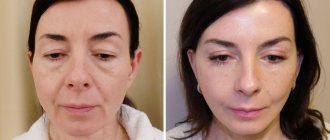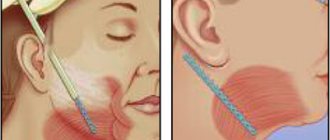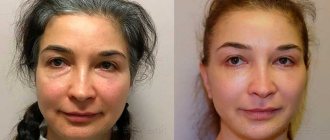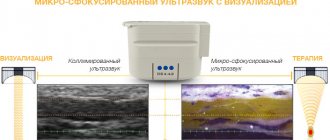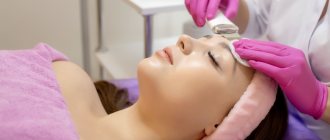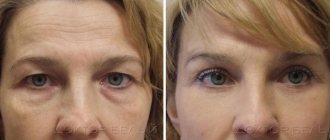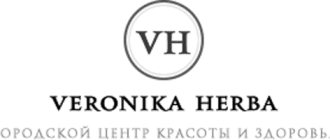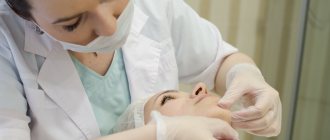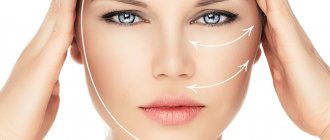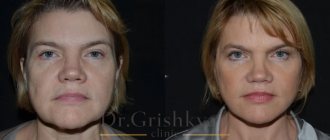Before
After
Before
After
When is the best time to have a facelift?
Any operation is effective only when it is done on time. Typically, women decide to undergo a facelift at the age of 45-50, when signs of skin aging become especially noticeable. However, you should come to your first consultation even earlier, as soon as you see in the mirror not what you expected. As my long-term practice shows, you can tighten your face after 35-40 years. If you have surgery at 45 and no later than 50 years old, then you will receive the most natural rejuvenation, which will follow you throughout your life; you will always be 10-15 years younger than your peers.
Removing Bisha's lumps
Removing Bisha's lumps allows you to get clearly defined cheekbones and a beautiful, chiseled oval face. This type of correction is carried out by gaining access through the inner surface of the mouth. The surgeon makes incisions no larger than 2 cm in size, through which the lumps are removed. In some situations, it is recommended not to remove it, but to move it - for example, to add volume to the cheekbones. In this case, the surgeon moves the lumps through the same incisions on the inside of the cheeks. After this, stitches are applied.
In some cases, bischectomy can be performed through the external facial side. Typically, this type of access is practiced when lump removal is part of a whole complex of plastic surgeries. The correction is performed under general anesthesia. Carrying out under local anesthesia is also possible, but most often not recommended.
For consultation
During the consultation, the surgeon will listen to the patient’s wishes regarding the upcoming operation and determine the degree of intervention required depending on factors such as:
- facial skin thickness;
- amount of subcutaneous fat;
- patient's age;
- anatomical features of the face.
It is highly advisable to bring photographs of yourself when you were young and from 10-15 years ago for your consultation. A circular face and neck lift using the SMAS method, performed by a high-class professional who thoroughly knows the anatomy of the face and takes into account the characteristics of a particular patient, does not change the appearance. A plastic surgeon will simply erase the signs of aging that have appeared.
Types of facelift
Endoscopic
Access is performed using endoscopic equipment through micropunctures in the skin up to 1 cm in diameter, this makes the facelift less traumatic. The surgeon sees the surgical field on the monitor, which allows him to act as accurately and accurately as possible. The minimally invasive nature of the operation shortens and simplifies the rehabilitation period.
Classical
An incision is made with a scalpel along the scalp, from the temple to the earlobe. This access is more traumatic, but is justified with significant age-related changes. With the correct actions of the surgeon and proper care, the marks after a circular lift will not be noticeable to others.
Prices
| Code | Procedure name | Cost, rub. |
| F35.06.04.0.005 | Subperiosteal forehead lift (open approach) | 77000 |
| F35.06.04.0.013 | Subperiosteal endoscopic forehead lift | 77000 |
| F35.06.04.0.017 | Endoscopic periorbitoplasty | 126500 |
| F35.06.04.0.001 | Lifting the middle third of the face using a subciliary approach (check-lift) (difficulty category 1) | 85000 |
| F35.06.04.0.002 | Lifting the middle third of the face using a subciliary approach (check-lift) (difficulty category 2) | 105000 |
| F35.06.04.0.003 | Endoscopic lifting of soft tissues of the midface using subciliary access | 115000 |
| F35.06.04.0.015 | Subperiosteal endoscopic lift of the upper two-thirds of the face | 181500 |
| F35.06.04.0.016 | Subperiosteal endoscopic midface lift | 115500 |
| F35.06.04.0.006 | Cheek fat pad resection | 29500 |
| F35.06.04.0.007 | Lifting the upper two thirds of the face with SMAS plastic surgery | 140000 |
| F35.06.04.0.014 | Skin lift of the face and neck (rhetidectomy) | 165000 |
| F35.06.04.0.008 | Face and neck lift with SMAS plastic surgery | 187000 |
| F35.06.04.0.009 | Lifting the lower two-thirds of the face and neck with SMAS plastic surgery | 170000 |
| F35.06.04.0.010 | Secondary facelift | 207500 |
| F35.06.04.0.011 | Secondary face and neck lift | 283000 |
Indications for correction
As a rule, patients turn to our cosmetologists for help with the following complaints:
- “folds of sadness” in the corners of the mouth
- nasolabial folds,
- shaved,
- flat or small chin.
For the most part, these are all natural age-related changes. By eliminating them, you can make your face significantly younger. Correction of the lower third of the face helps restore its beautiful contour.
Facial rejuvenation methods
The method of anti-aging surgery is selected depending on the type of face. Each patient is a new challenge with individual conditions, because no two individuals are alike. If we talk about types of aging, then the final good result is easier to achieve with the fine-wrinkled type of tissue aging: the tissues are more mobile and immediately tighten well. Ptotic, “heavy” faces are more difficult: you need to deal with heavy tissues so that after the operation nothing hangs, and the face lift looks natural and not overtightened. And here it is not enough to master the technique; it is necessary to very accurately calculate what, where and where to pull, what to additionally hem, etc. And for the “tired” type, a combination of endoscopic forehead lifting with upper and lower blepharoplasty will give a very beautiful result. However, always and in any case, each operation is individual, depending on the wishes of the patient and the characteristics of his face. And, of course, it depends on the surgeon’s capabilities: the more techniques in his arsenal, the more personalized the option.
Dr. Viktor Ivanovich Kushchenko has been successfully operating on his patients for more than 30 years, undergoing internships with foreign colleagues and improving his qualifications. Thus, in 2007, Viktor Ivanovich received an improvement on the topic “Rejuvenating surgeries on the face and neck”, in 2010 an improvement on the topic “Endoscopic methods of rejuvenation of the face and neck. The use of facial implants,” in 2017, improvement on the topic “Advanced aesthetic blepharoplasty, contouring and facial rejuvenation.” In his practice, Viktor Ivanovich Kushchenko currently uses the following techniques:
Endoscopic forehead lift
Endoscopic forehead lift is indicated for patients with slight sagging of the skin in the upper eyelids and drooping eyebrows. Such patients tend to have a frowning appearance. As a result of the operation, the patient will get rid of folds on the forehead and between the eyebrows, as well as overhanging folds in the upper eyelids. The eyebrows will rise moderately, the gaze will become more expressive and friendly. An endoscopic lift is performed through two incisions in the scalp, the forehead tissue is shifted posteriorly, and is fixed with two screws. The main advantage of this operation is that the incisions (1.5 cm each) are made in a completely invisible place, and the healing process is very fast and almost painless.
Retidectomy
The peculiarity of rhytidectomy is that the possibility of damage to the branches of the facial nerve is completely eliminated. During the operation, the fascia is sutured without detaching it, and excess skin is excised. This is the safest method of facelift.
Circular facelift using SMAS method
This method is used to simultaneously lift all areas of the face and is one of the most effective ways to get rid of deep nasolabial folds and sagging cheek tissue. What is SMAS lifting? This is a deep facelift, which is aimed at regenerating the muscular aponeurotic layer (smas system, which is nothing more than the muscular system connecting the dermis and muscles). SMAS on the face is located in three zones: the area near the ears, on the neck and on the cheeks. One of the functions of this system is the normal functioning of the facial muscles, but over time it weakens. This is the reason why the following occurs: small wrinkles on the surface of the neck, double chin, drooping of the upper eyelid, the formation of bags under the eyes, deepening of the nasolabial folds, the appearance of so-called “bulldog cheeks” and “jowls”.
With a classic circular lift using the SMAS method, the surgeon’s scalpel begins its path in the temple area. Next, it passes along the face to the earlobe and ends in the area behind the ear. This is all a natural fold line. Through the resulting incision, the upper part of the skin is peeled off, the SMAS layer is separated and tightened. Excess tissue must be excised during the operation. If necessary, the surgeon can perform liposuction. Next, the surface layer of skin, which has been given a new position, is subject to fixation. Stitches are then applied. The surgeon camouflages them along the hairline.
Temporal lift or upper 1/3 face lift
This operation is very often performed simultaneously with eyelid surgery. The incision line runs through the hair in the temple area. This technique is effective for drooping of the outer edge of the eyebrow, as well as for the accumulation of wrinkles in the area of the outer corner of the eye.
Upper 2/3 face lift
It is performed on patients with pronounced changes in the temples, cheeks and fairly good condition of the neck tissues. Incisions are made in the scalp and in front of the ear. During the operation, the SMAS technique can be used.
Lower 2/3 face lift
The operation is aimed at correcting both the oval of the face and tightening the tissues of the neck. The surgical technique usually depends on the condition of the tissues and muscles of the face. The incision line runs in front of the auricle and goes to the back of the head. In some cases, the SMAS technique may be used.
Chin correction
This operation is indicated for patients with no or mild cervical-mental angle, as well as for patients with the so-called “double chin”. During the operation, the fatty tissue of the chin area is excised, and the muscles of the neck and diaphragm of the mouth are reconstructed. Chin plastic surgery is usually not performed on its own and should be combined with a facelift or a lift of the lower 2/3 of the face.
How to determine which facial rejuvenation method is right for you, where to start?
It's simple. Consult a good plastic surgeon.
Ask a Question
Minimally invasive endoscopic technique
The endoscopic equipment used in this operation eliminates the need for large incisions. Our clinic has modern Karl Storz optical video systems with a wide range of tools, thanks to which it is possible to avoid invasive effects on the skin and muscles of the face: multi-layer surgical correction is performed intradermally - through micro-incisions, which avoids the appearance of postoperative scars and scars, and also minimizes the period postoperative rehabilitation of the patient.
How is the operation performed?
The general essence of the operation: after skin detachment, mobilization, movement and fixation of the superficial muscular aponeurotic system (SMAS) is performed, excess skin is excised, followed by the application of a cosmetic intradermal suture. The locations of the incisions and sutures depend on the technique used to perform the operation.
The duration of the operation depends on the scope of the intervention, for example, skin tightening of the temporal area lasts 40 minutes, and an extended facelift with the SMAS technique, forehead and chin plastic surgery can last from 4 to 6 hours.
Features of the recovery period
Patients are usually discharged one day after surgery. The day after surgery, there is practically no swelling of the soft tissues of the face. And the patients look pretty good. Contrary to popular belief, there are no subcutaneous hemorrhages on the face either - they appear only on the neck, where the skin is thin. Further, the swelling gradually increases and reaches its peak by the third day. In the first five days after surgery, it is necessary to apply cold to the bandage. Ultrasound and microcurrent lymphatic drainage are also very helpful in relieving swelling - I prescribe these procedures from the second day after surgery. The sutures are removed at 12-14 days. As a rule, after 2-3 weeks, having covered the fading bruises in the neck area with light makeup, patients can return to work.
It is quite possible that there may be a slight decrease in the sensitivity of the skin in the cheek area. Skin sensitivity is gradually restored within 2-3 months after the tightening. Lumps that appear after surgery can be treated with various physiotherapeutic procedures and lymphatic drainage.
A comparative result can be observed no earlier than 2 months after the facelift.
During the rehabilitation period, to eliminate the risk of possible complications and speed up the healing process, it is recommended:
- immediately after surgery, apply cold, dry compresses to reduce bruising and swelling;
- Wear a special elastic bandage for 2-4 days; limit head and neck mobility for about a week;
- sleep with your head elevated to reduce swelling;
- During the entire recovery period, in order to avoid tissue necrosis, do not smoke or drink alcoholic beverages;
- to avoid the development of infection, be sure to take medications prescribed by the surgeon;
- do not play sports or overexert yourself physically, do not visit saunas, steam baths, beaches, swimming pools and solariums for at least 6 weeks after surgery (all this can be returned to after all the crusts on the scars have fallen off).
S-lifting
The short scar technique is a form of mini facelift, as well as a modification of the SMAS lift. With this technique, an incision is made in front of the auricle in an “S” shape, with rare exceptions an additional incision is required in the temporal part of the scalp. The absence of a postauricular incision reduces the trauma of the operation, prevents the risk of damage to the facial nerve and reduces the risk of hair loss.
Ideal candidates for an S-lift are patients between the ages of 30 and 45 who do not have significant sagging neck skin that requires removal of excess skin.
This technique allows you to significantly rejuvenate the middle and lower third of the face:
– eliminate jowls;
– remove double chin;
– eliminate sagging in the cheeks and cheekbones;
– get rid of pronounced nasolabial folds;
– remove minor sagging skin on the neck.
The rehabilitation period after an S-facelift is much shorter than the “traditional” one; most patients return to work after 7-10 days. Discharge from the clinic occurs the next day after the operation. It is necessary to wear a compression bandage for 5-7 days. Swelling and bruising subside within 4-6 days. In the first week, pain may occur when chewing due to subcutaneous sutures, so during this time the food should be soft and semi-liquid. Usually after a week all unpleasant sensations disappear.
The procedure allows you to achieve long-term natural rejuvenation results.

